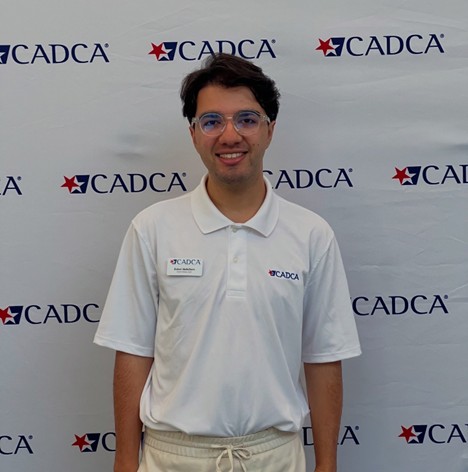As my internship at the Community Anti-Drug Coalitions of America (CADCA) comes to a close, I find myself reflecting on two transformative takeaways that will guide me long after this summer ends.
Yes, I’ve come to understand the power of public interest communications—how storytelling, strategy, and timing can move a message from a whisper to a catalyst for national change. And yes, I witnessed firsthand the strength and necessity of community-driven coalitions and the powerful role they play in creating sustainable solutions to substance use and public health challenges.
However, coming into this summer, I had experience in advocacy, research, and nonprofit work, but I hadn’t yet grasped how communications could serve as a bridge between ideas and impact. At CADCA, I worked with the Marketing, and Communications (MarCom) team, contributing to media relations, newsletters, and social media campaigns, especially for the Customized Training Services (CTS) and Spanish-language outreach. What surprised me most was the strategy behind every word. A graphic wasn’t just a graphic—it was an intentional message, crafted for a specific audience at a specific time. Every sentence in a social media post had to serve a purpose: to inform, inspire, and activate.
Our communications weren’t just digital. They were deeply human.
I experienced how when we were announcing new prevention tools or celebrating coalition successes, we were highlighting people—local leaders, youth advocates, and volunteers—who are on the front lines of prevention. This helped me to learn that effective communication means meeting people where they are, both geographically and emotionally. It requires listening before speaking, and context before content. Through this, I’ve developed a new sense of responsibility when it comes to using my voice and always making sure it’s rooted in truth, community, and care.
The second key learning unfolded more clearly during the Mid-Year Training Institute (MYTI) in Nashville, Tennessee. At MYTI, I saw what CADCA looks like beyond the headquarters: a dynamic, grassroots network of coalitions from every U.S. state and territory. Thousands of prevention professionals, youth, and leaders gathered to share tools, workshops.
I attended sessions ranging from culturally responsive prevention strategies to engaging immigrant youth, and everywhere I looked, I saw the power of local knowledge and collaboration. Coalitions that knew their communities deeply were tailoring their approaches accordingly, using faith leaders, TikTok, barbershops, or bilingual outreach to build trust. These were not one-size-fits-all solutions. They were community-powered, data-informed responses to deeply entrenched issues.
One conversation at MYTI stayed with me: a youth leader from rural Minnesota explained how her coalition trained teens to administer Narcan and build resilience through storytelling circles. In just five minutes, she helped me understand a world vastly different from my own—and yet, our goals were the same. And I believe that this is the strength of coalition-based work: it transcends boundaries, celebrates local wisdom, and builds power from the ground up.
Thinking beyond the Karel Fellowship, I believe I will take with me the lessons of this summer: that communication is not just what we say but how and why we say it—and that change doesn’t come from a single voice, but from a symphony of communities rising together. CADCA gave me the language to speak about prevention, but also the courage to believe that my voice, when used thoughtfully and collaboratively, can matter. I will carry this knowledge forward as I pursue a career in the non-profit and civil society sectors, and as I continue my education with a focus on civil society engineering and research.
I’m grateful to have spent this summer learning from and contributing to an organization whose mission is both urgent and enduring because prevention is possible, and through connection, creativity, and coalition-building, it’s already happening.

